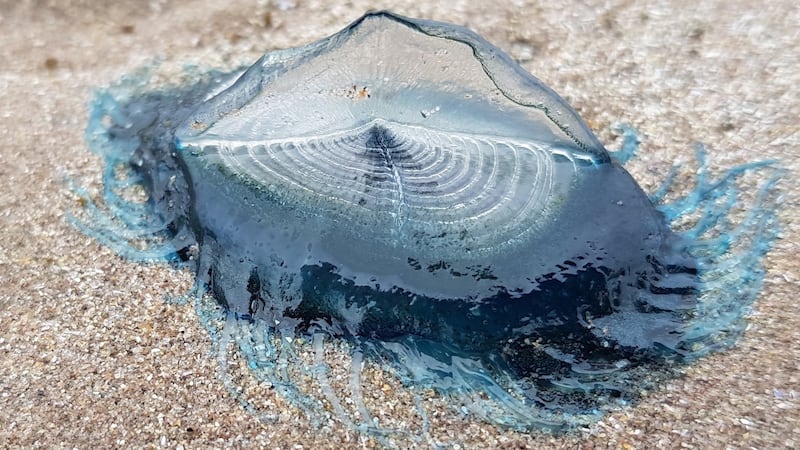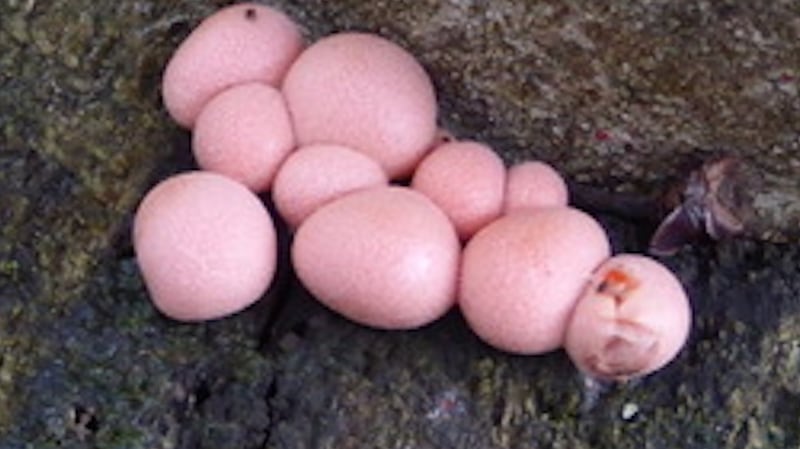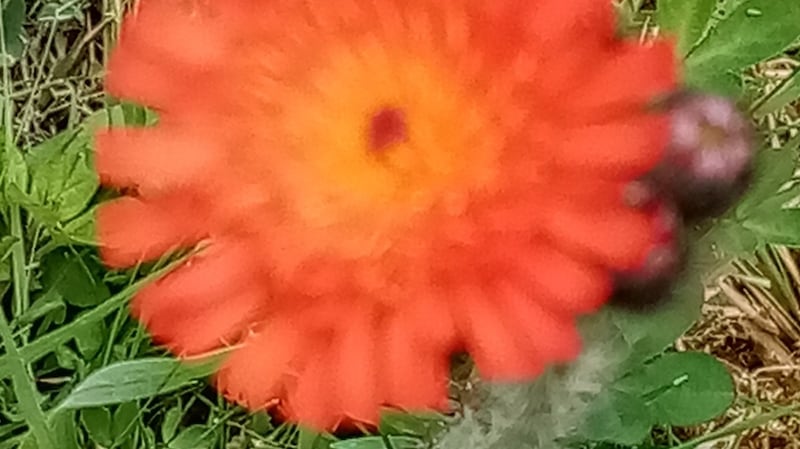My son took this picture underwater of a jellyfish. It is like the common jellyfish but without the four pink rings. Is it unusual?
Brian Ó Cuiv, IndreaBhán, Co na Gaillimhe
It's the crystal jellyfish, Aequorea spp, which is found in Irish waters. It is famous for being a source of a green fluorescent protein useful in molecular biology research. The discovery of the molecule won a Nobel Prize.

There were a few of these things on Inch beach in Kerry. They were about 75mm across.
Stewart Stephens, Milltown, Co Kerry
They are the by-wind-sailor, Velella velella, a colonial jellyfish that moves by means of a sail on the surface of the ocean. In this photo the underhanging tentacles are visible.
These salmon pink eggs were on an old tree stump. They have started to degenerate.
James Nixon, Killinchy, Co Down

They are not eggs, but a slime mould which takes many different forms. Slime mould is a protist, an organism that shares animal and plant or fungal characteristics. It will turn brown and go into the spore stage.

Can you identify this gorgeous wildflower in the lawn? It has a hairy stem and a cluster of buds underneath the flower.
Chris O'Callaghan, Frankfield, Cork
Called fox and cubs, it's a member of the daisy family.

I took this photo of a heron on the Lagan. I've only ever seen grey herons, but as you can see this one is blue.
Christina Wilson, Belfast
The grey heron is closely related to the American great blue heron and the plumage is similar. The blue gene appears occasionally in Irish and UK grey herons. The blue heron has brown flanks and thighs, while the grey's are white.

I found these rigid structures attached to grass stems. Are they empty chrysalises?
Gabrielle O'Kelly, Downings, Co Donegal
They are the cocoons of the six-spot burnet moth.
Ethna Viney welcomes observations and photographs at Thallabawn, Louisburgh, Co Mayo, F28 F978, or by email at viney@anu.ie. Include a postal address.











